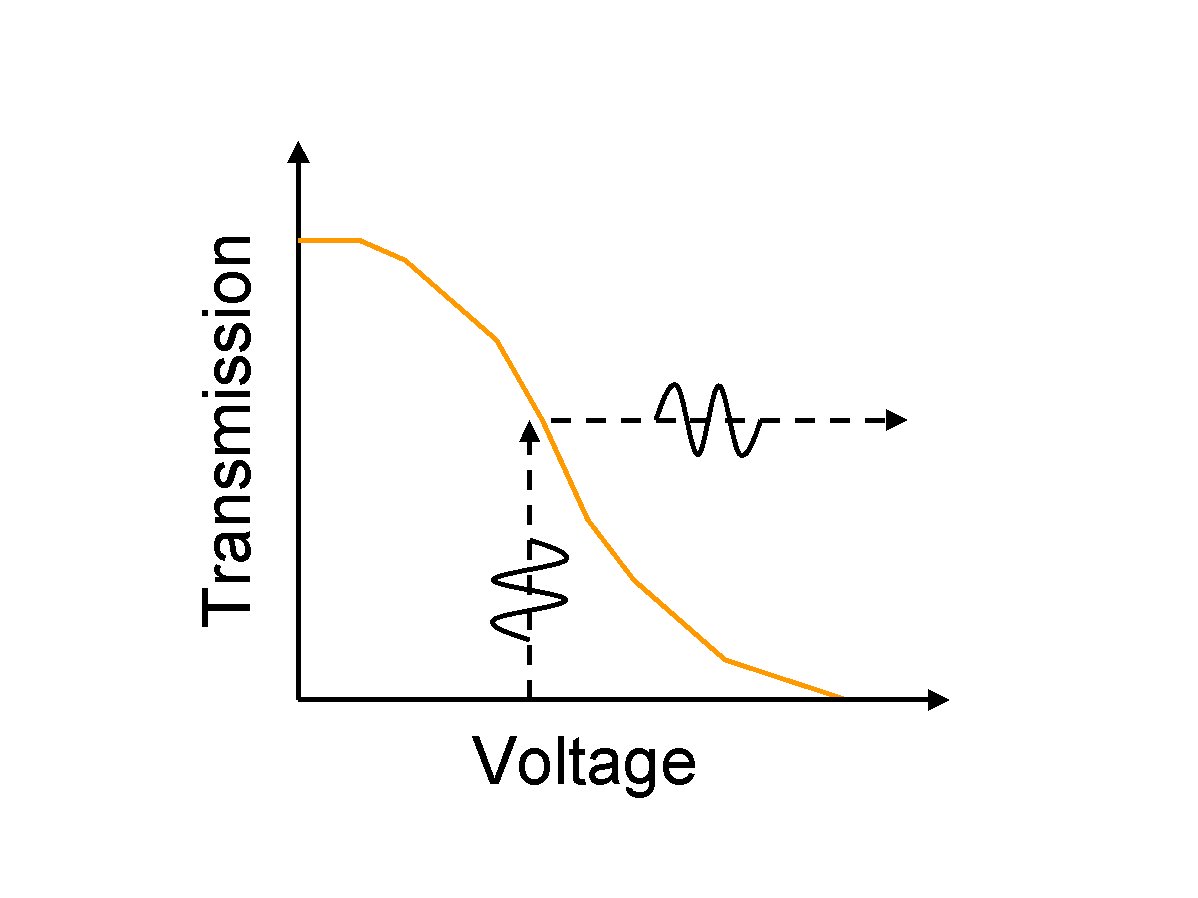...
HOME
INTRODUCTION
Introduction to Optical Modulators
What is the optical modulatorand why do we need it?
In optical fiber communications, the information carrier is light. One of the main advantages of using light guided in the fiber to transmit information from one point to the other comes from the extremely low loss in light intensity while it is being transmitted through the fiber. Currently, the loss of the commercially-available silica fiber is around 0.2 dB/km at 1.3 or 1.55 um, which is the wavelength of interest due to its minimum dispersion and minimum loss in the fiber, respectively. Now the question is how we convert the information in the electrical signal, that is processed outside the fiber using common electronics, to the optical one to be carried by light. This process of converting the electical signal to the optical is called E-O conversion. At the end of the fiber, the optical signals should be converted back to the electical to be used by the electronics again. This process is called, naturally, O-E conversion, which is typically done by photodiodes.
The simplest way of doing the E-O conversion is just changing the light intensity according to
the electrical signal, and this is commonly used in both analog and digital communications. This
type of modulation scheme is called intensity modulation [see the figure below]. One way of doing intensity modulation
is changing the drive current supplied to the laser diode, which is the light source commonly used
in the optical fiber communications, thereby changing the output light intensity. This method is called direct modulation.
[See Ortel's directly modulated laser (data sheet
![[PDF Image]](pdf.gif) 162 kB) as an example.] Its simplicity
made the direct modulations very popular, but as the modulation frequency goes up to GHz range,
normally the direct modulation poses problems due to the relaxation oscillation of the laser diode when
its drive current is modulated. The chirp
in the signal also increases as the frequency goes up in this scheme. To overcome these problems,
the external modulation scheme was proposed, which uses a separate optical modulator that
does the intensity modulation. In this case, the light source, laser, operates in the continuous wave (CW)
mode. Hence the problem with the relaxation oscillation in the laser diode does not exist here. Also the chirp
in the signal is reduced. This enables higher speed modulation (>10 GHz). As the demand for information
goes up with the rapid development of the world-wide web, faster and faster information-transmission speed is required.
The optical modulators are prducts of those needs. There are some needs for the faster information transmission on the defense side, too.
162 kB) as an example.] Its simplicity
made the direct modulations very popular, but as the modulation frequency goes up to GHz range,
normally the direct modulation poses problems due to the relaxation oscillation of the laser diode when
its drive current is modulated. The chirp
in the signal also increases as the frequency goes up in this scheme. To overcome these problems,
the external modulation scheme was proposed, which uses a separate optical modulator that
does the intensity modulation. In this case, the light source, laser, operates in the continuous wave (CW)
mode. Hence the problem with the relaxation oscillation in the laser diode does not exist here. Also the chirp
in the signal is reduced. This enables higher speed modulation (>10 GHz). As the demand for information
goes up with the rapid development of the world-wide web, faster and faster information-transmission speed is required.
The optical modulators are prducts of those needs. There are some needs for the faster information transmission on the defense side, too.
 
INTENSITY MODULATION: the direct modulation of a laser diode (left) and the external modulation of an optical modulator, while the laser is operated in CW mode (right). |
Return to EAM home.